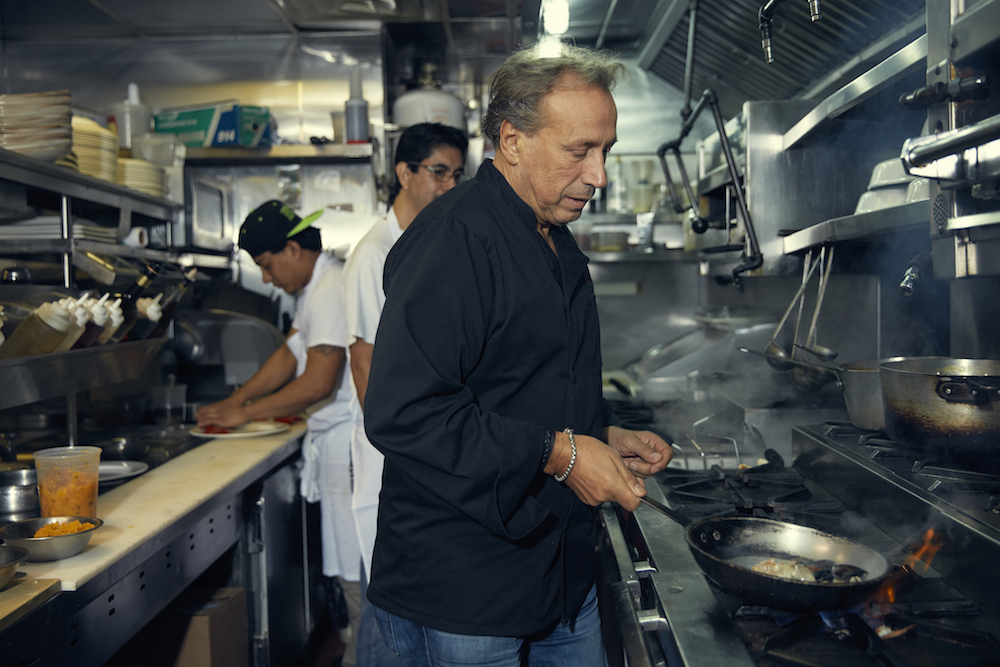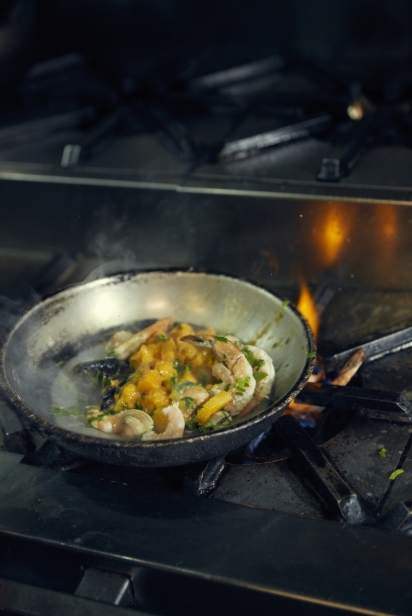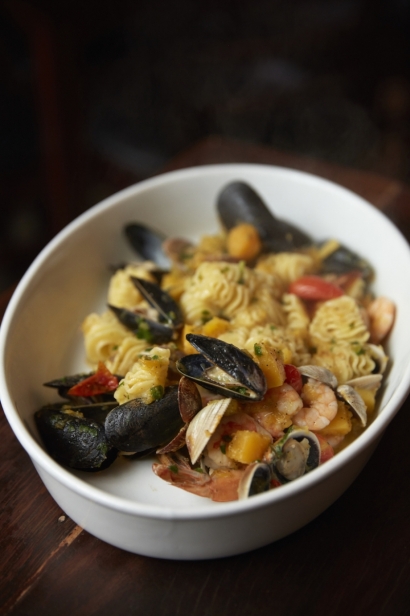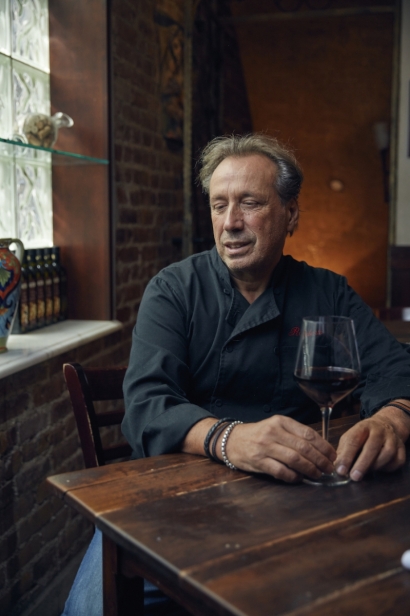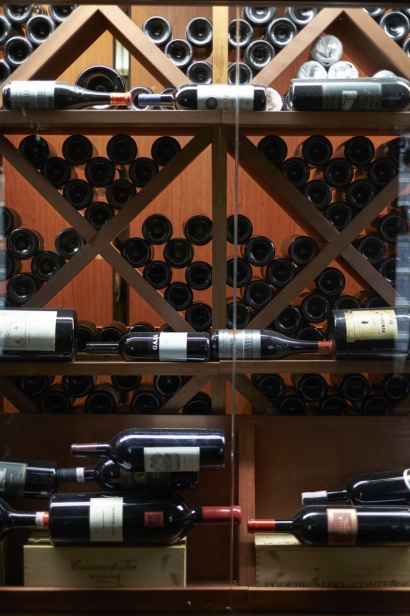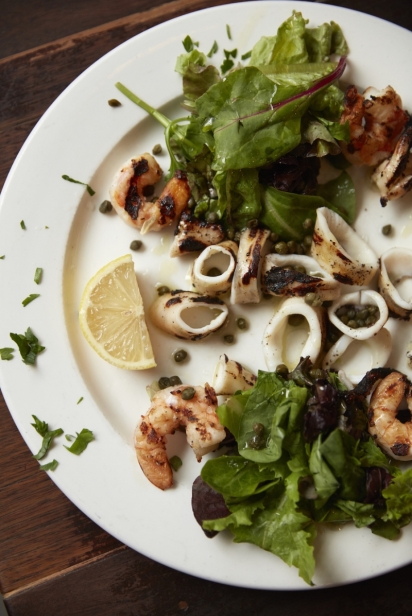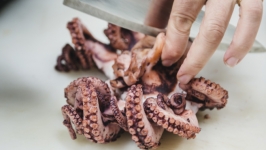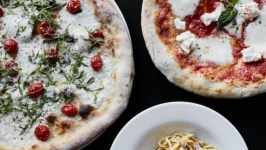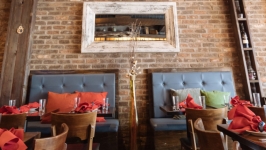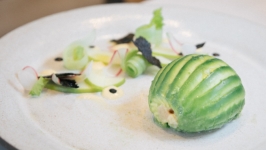Italian tradition endures and evolves in Belmont
Roberto Paciullo steps left out of his Crescent Avenue restaurant and then left again into the Arthur Avenue Market. Specials at Roberto’s Restaurant change every two weeks, and this is the place where the chef and owner finds inspiration.
He inspects Swiss chard and sweet peppers while shaking hands with market staff and patrons. His eyes lose focus as he sniffs an orange bell pepper, like a sculptor seeing the statue waiting inside the rough stone. The market is his muse.
“When I don’t know what to make, I go inside the market,” said Roberto, recalling an early autumn bolt of inspiration. “I go inside, and I see a green tomato. So I bought a bunch of green tomatoes. I made a bucatini with green tomato, speck and guanciale. I sautéed the speck and guanciale with green tomato, tossed in toasted breadcrumbs, and pecorino.”
He comes by this simple, elegant, artistry naturally. Born in Salerno, Italy, in a family with 11 kids, the Chef found his calling early.
“I think we are all born with a gift, you know? Since I was a little kid I had a gift with food,” he said. “Maybe this doesn’t make sense, but I think about songwriters, like Billy Joel. How can they write so many beautiful songs? Because your brain develops the song. For mine, it’s the food. Whatever I do, before I do it, I already know the way it’s gonna look; I already know the way it’s gonna taste."
The city’s fierce competition, staggering overhead and finicky diners can make menu design stressful. It can bog down restaurateurs in complicated supply-and-demand calculations or fearful complacency. For Roberto, changing the menu is something transcendent, closer to fine art than commerce.
Moving to Arthur Avenue in 1970, he instantly found his true home and feels deep devotion to the neighborhood. “I’m 100 percent Bronx,” he said. Roberto buys all his ingredients locally, at nearby shops. Butchers, bakers, cheesemakers and fishmongers, they all know him and eagerly swap stories and jokes in English or Italian.
They all grew up here. Many went away to college, earned degrees, worked in finance in Manhattan or something similar, then came home to take over the family business. Now their children are doing the same. Unlike Manhattan’s Little Italy, the inhabitants of the Bronx version opted to own rather than rent, leading to longevity and rich authenticity where the Mulberry Street counterpart has faded.
Just as Roberto can reinvent his menu without upending classics like linguini with clams, change is good in old Italian neighborhoods too, he said. Belmont is changing. There’s a lot more Spanish than Italian spoken on and off Arthur Avenue these days, and some are concerned the neighborhood is losing its signature element. Roberto, however, encourages his staff, many of whom are of Mexican descent, to move to the area, raise their families here. He says he’d rather they have an ownership stake than feel like outsiders—the same chance he was given so many years ago.
Roberto opened his eponymous restaurant in 1989, moving a few doors down in 2004. The interior of Roberto’s matches the personality of the chef, warm and artistic. The walls are brick, adorned with art work. Look up to find colorful chandeliers and white arch ways giving the dining room an organic flowing feel. Downstairs you’ll find an impressive wine cellar—a wine that pairs well with every dish and to please every pallet.
He’s eager not to appear to cater to Italians only and keeps prices low, so no one feels excluded. But there’s no stifling his Italian mannerisms: Talking with his hands, he taps the table and reaches out to touch the listener while recounting his seasonal comfort-food creations. Not too long ago, his eye caught some porcini mushrooms, so he created a risotto with the mushrooms, cannellini beans and shaved parmesan.
Roberto’s Radiatori con Zucca e Porcini calls on these same mushrooms in pasta with soft butternut squash. The result is a bright and playful cold-weather dish. For all his creativity, when it comes to pasta Roberto also keeps it simple, usually only using three ingredients and forgoing chicken or vegetable stocks entirely.
Ravioli is a favorite place for creativity. His eyes light up as he explains one of his latest creations:
“I was walking through the market, and I saw a lot of figs. So I got the figs, and I put them in the oven… Then I combined some goat cheese and radicchio. So I made a mix of figs, goat cheese and radicchio, and I make a ravioli. Then I put a little bit sage butter on top. To me, the ravioli are so tasty you don’t need a sauce on top.”
This is where Roberto shines: With just three ingredients, he reimagines a classic dish.
More than anything, perhaps, Roberto wants to create community. He’s passionate about building multicultural neighborhoods and building an atmosphere of inclusion. He’s in it for the smiles. “The restaurant, to me, is not about how much money you make. You come in, you see people eat, the tables are full, you feel good. So it’s not about how much money you make. When people leave they see you and say, ‘Oh, it was so good, thank you.’ That’s what a restaurant is to me. It’s something that makes [it so] you can’t wait to go to work.”
Learn more about Roberto Paciullo's restaurants, Roberto's, Zero Otto Nove and Fiasco.


